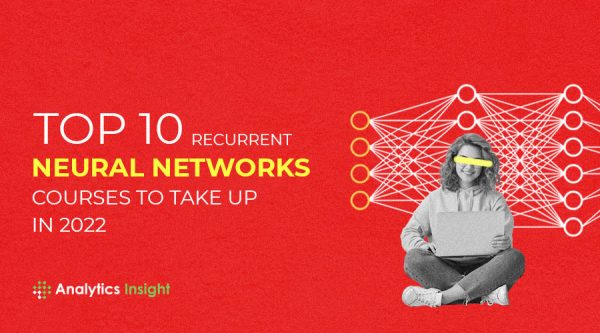Recurrent neural networks are now used in businesses for the massive opportunities they produce
Artificial neural networks are extensively used by companies to enable leaders to solve the most complex problems in real-life situations. These neural network models are trained and modeled to learn the relationships between inputs and outputs that are nonlinear and complex. Business leaders generally use neural networks to identify credit card and fraud detection, optimization of logistics for transportation networks, medical and disease diagnosis, target marketing, train robotic control systems, and several other similar functionalities. Now, leaders are also newly attracted to a new wing of neural networks, known as recurrent neural networks. Recurrent neural networks are a type of neural network in which the results of the previous step are integrated into the current step. This branch of technology is quite new and is in extreme demand among big tech companies. Hence, more and more tech aspirants are willing to learn this and opt for this as a career opportunity. Here are some of the top recurrent neural network courses that you can choose to learn in 2022.
Deep Learning: Recurrent Neural Networks in Python
Offered by: Udemy
With the help of this course, aspirants will be able to learn to apply RNNs to time series forecasting and image classification. They will also understand and learn about the basic recurrent units like GRU and LSTM, and further understand how to mitigate the vanishing gradient problem.
Deep Learning A-Z: Hands-On Artificial Neural Networks
Offered by: Udemy
This course will enable participants to understand the intuition behind the artificial neural network and also about the recurrent neural networks. They will also understand the intuition behind AutoEncoders, and apply Recurrent Neural Networks and Self-Organizing Maps in practice.
Simple Recurrent Neural Network with Keras
Offered by: Coursera
In this hands-on project, aspirants will use Keras with TensorFlow as its backend to create a recurrent neural network model and train it to learn to perform the addition of simple equations given in the string format. They will also learn to create synthetic data for problems as well. By the end of this 2-hour-long project, participants will have created, trained, and evaluated sequence-to-sequence RNN models in Keras.
Fundamentals of CNNs and RNNs
Offered by: Coursera in partnership with Sungkyunkwan University
This course covers fundamental concepts of convolutional neural networks (CNNs) and recurrent neural networks (RNNs), which are widely used in computer vision and natural language processing areas. The goal of this course is to give learners a basic understanding of CNNs and RNNs. Throughout this course, participants will be equipped with skills required for computer vision and natural language processing.
Building Deep Learning Models with TensorFlow
Offered by: Coursera in partnership with IBM
After completing this course, learners will be able to explain foundational TensorFlow concepts such as the main functions, operations, and execution pipelines. They will be able to describe how TensorFlow can be used in curve fitting, regression, classification, and minimization of error functions and understand different types of deep architectures, such as convolutional networks, recurrent networks, and autoencoders.
Artificial Intelligence Foundations: Neural Networks
Offered by: LinkedIn Learning
In this course, instructor Doug Rose provides an overview of artificial neural networks, explaining what they are and how you can use them for several machine learning challenges. The participants will then automatically discover different ways in which they can use this technology to do fascinating new things for their individual projects or businesses.
Deep Neural Networks with PyTorch
Offered by: Coursera in partnership with IBM
The course will teach participants how to develop deep learning models using Pytorch. The course will start with Pytorch’s tensors and automatic differentiation package. Then each section will cover different models starting with fundamentals such as Linear Regression, and logistic/softmax regression.
Language Modeling with Recurrent Neural Networks in TensorFlow
Offered by: Pluralsight
If you are working with text data using neural networks, RNNs are a natural choice for sequences. This course works through language modeling problems using RNNS – optical character recognition or OCR and generating text using character prediction. After ending this course, the participants will learn how to efficiently use neural networks and practice them to solve real-life business complexities.
Recurrent Neural Network Model
Offered by: Coursera
By the end of this course, the participants will be able to build and train Recurrent Neural Networks (RNNs) and commonly-used variants such as GRUs and LSTMs, apply RNNs to character-level language modelling, gain experience with natural language processing and word embeddings, and use hugging face tokenizers and transformer models to solve different NLP tasks such as NER and question answering.
Recurrent Neural Networks and TensorFlow Customization
Offered by: Alison This free online course on recurrent neural networks and TensorFlow customization will be particularly useful for technology companies and computer engineers. It will introduce the participants to recurrent neural networks (RNN) and recurrent neural network architectures. Learners will also be introduced to TensorFlow customization, the customization of Tensorflow Keras sequential API, and also learn scaling strategies for TensorFlow models.
Source: analyticsinsight.net









